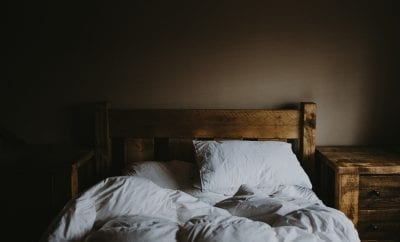
Lifestyle
The Science of Napping
Hitting that afternoon slump is one of the worst things, especially when it comes to your productivity and overall energy. Too often we patch up our fatigue with another cup of coffee, or just force ourselves to slog through it rather than recharging with a quick nap. Despite the apprehensiveness we show towards napping, it turns out it can be the most effective way to drastically improve your overall energy, and here’s why.
Sleep has fallen to the wayside in the modern world, with the average adult clocking in less than six hours of sleep per night. This is much lower than the recommended seven to nine hours of sleep by the National Sleep Foundation.
When we sleep, we are giving our bodies the chance to perform some incredibly important functions that have a major impact on just about every aspect of our health. Sleeping brings about the repair of tissue, growth of muscle, regulation of hormones, and the chance for our brain to consolidate and store memories. Most importantly, sleep makes us less tired. Who’d of thought?

Right around the 1 to 3 p.m. mark, our bodies are biologically programmed to begin to slow down in terms of energy, with melatonin production ramping up. This is the reason we hit that afternoon slump, causing us to reach for that coffee pot. Instead of just prolonging the weariness, a quick nap can work wonders in restoring your energy, and keeping your creativity, motivation, and mental clarity pumping well throughout the afternoon.
The most important thing to factor in when it comes to an afternoon nap is the time. So often you hear people say “Oh, naps don’t work for me because when I wake up, I’m more tired than I was before.” This is due to one thing: how long you sleep for.
When we sleep, our body goes through five stages of rest. The key to successful napping is in the first two stages, where you will get numerous benefits without falling into a deep state of rest. Stage one is when we’ve just slipped into sleep, but a light stimuli will likely wake you up. After 20 or so minutes, you will fall into stage two, which is the sweet spot for napping.
During stage two, our body is given the chance to do its housekeeping and recharge its battery so you can continue to perform later in the day. This stage lasts for about 45 minutes, which is the optimal time for taking a nap. Any longer, you risk falling into the deeper stages of sleep, which will leave you feeling drowsy after waking up.
To ensure you’re getting the most out of your afternoon nap, here are some important tips to follow:
- Watch your caffeine consumption as you near your nap time. Caffeine in your system can make it difficult to drift off, leaving you restless and wasting time.
- Set an alarm so you ensure you’re falling into a deeper sleep before waking up.
- Try sticking to a schedule when you nap. Your body will eventually become used to this, and falling asleep will be easier





0 comments